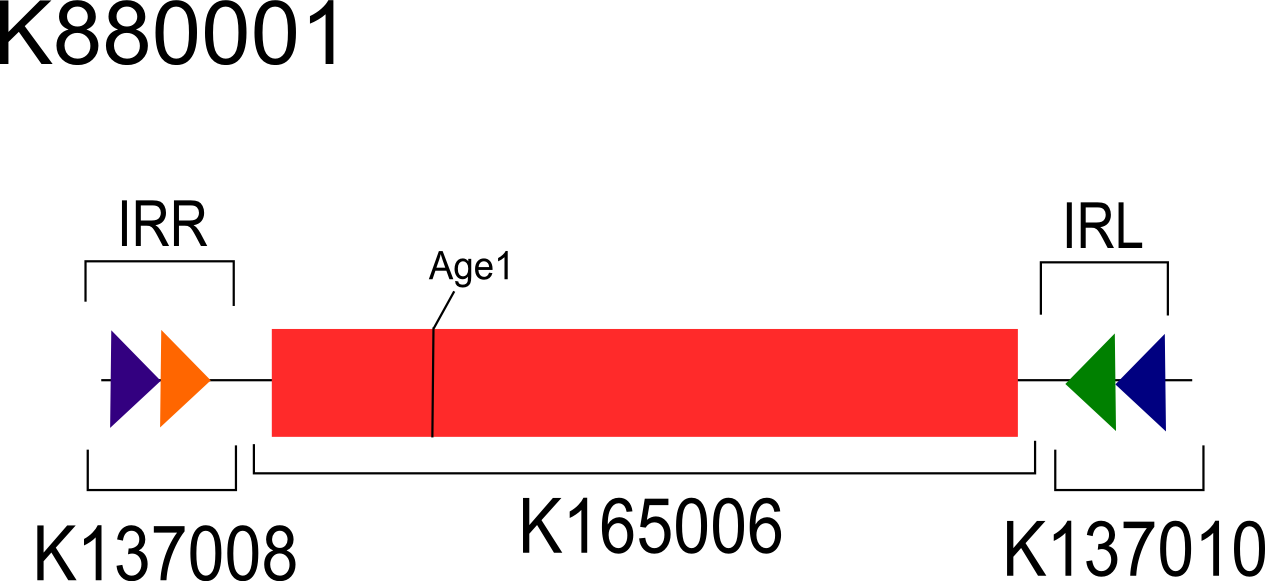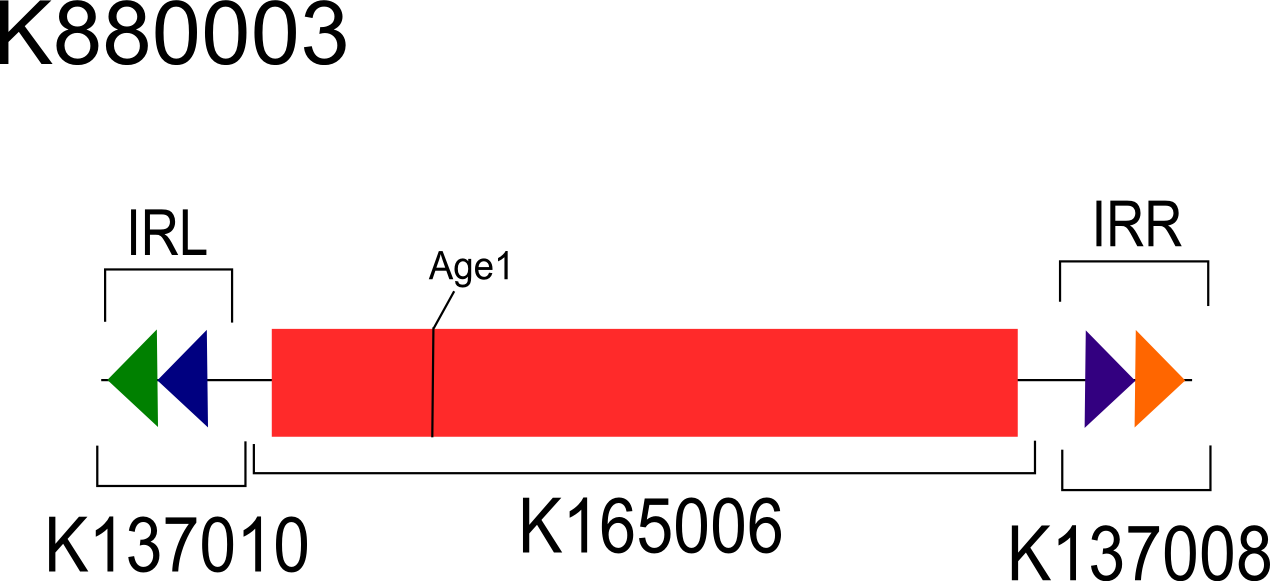Team:Michigan/Results
From 2012.igem.org
(Difference between revisions)
m |
|||
| Line 55: | Line 55: | ||
Observation of IRR and IRL Orientation: | Observation of IRR and IRL Orientation: | ||
</h2> | </h2> | ||
| + | |||
| + | Scrutiny of the DNA sequence provided a possible explanation of the negative results. | ||
| + | As constructed, verified by sequencing, the orientations of IRL(K137010) and IRR (K137008) within the inversion region of K137058 were orientated 180º when compared to the natural <i>fimS</i> region (Gally et al., 1996) and a previously engineered recombinase systems (Ham et al., 2006). This resulted in the IRL and IRR being oriented such that the external half-sites are localized adjacent to the inversion region, while the internal half-sites are located externally (Fig 6). We hypothesize that this 180º orientation of the IRL and IRR is the determinative factor to the inversion negative results. | ||
<h2> | <h2> | ||
Revision as of 00:18, 4 October 2012
Introduction
In order to test the effectiveness of the recombinases used in our system, we developed two assays -- an “asymmetrical digest” reporter and a fluorescence reporter. The former is used to directly test the inversion of the target DNA region, while the latter is used to demonstrate inversion induced protein expression.The Asymmetrical Digest Reporters
The two asymmetrical digest reporters in their unflipped state (invertible by FimE) are shown in figures 2 and 3. These reporters rely on an off-center AgeI restriction site which will yield fragments of varying size depending on the orientation of the inversion region. Table 1 shows the expected sizes of the fragments in each orientation. The differences between the reporters are discussed below.The Fluorescent Reporters
The fluorescent reporters, show in in figures 3 and 4, have a constitutive tetR promoter within the inversion site, allowing for the expression of GFP in the flipped orientation.
 "
"



